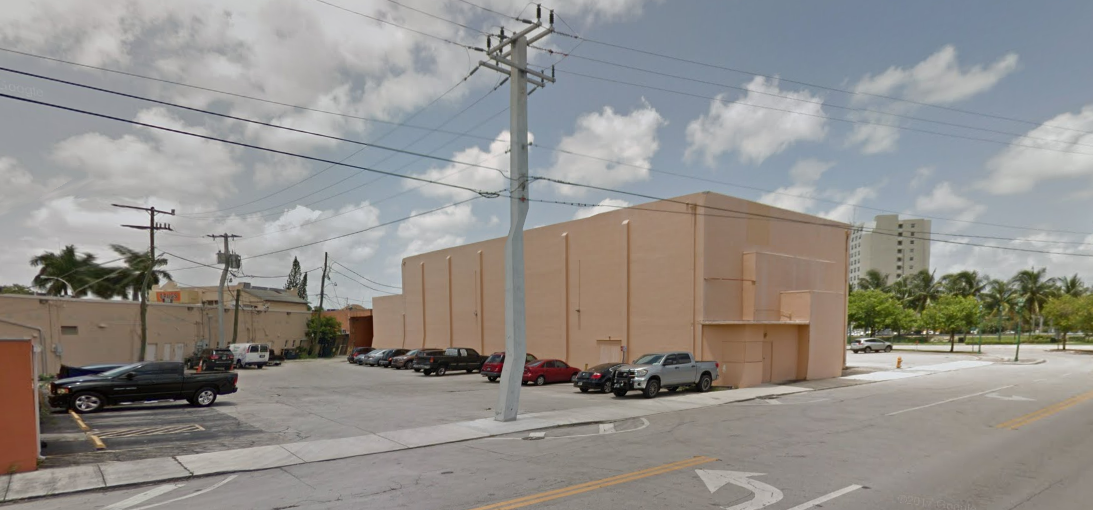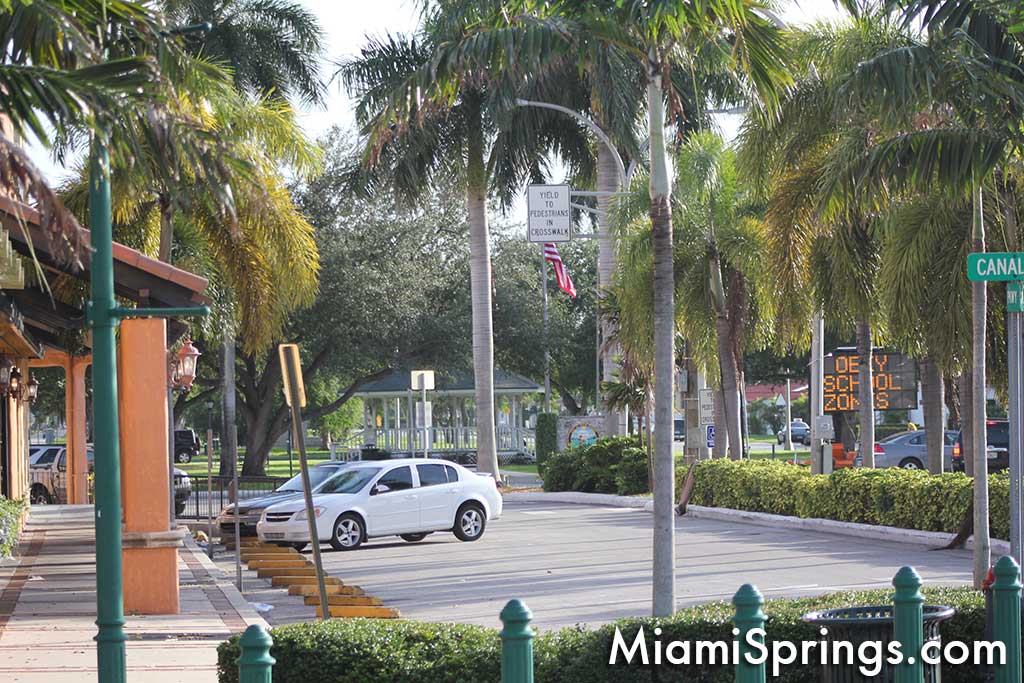The City of Miami Springs will have the First Reading of an ordinance to change details in the city’s land development code and the FAR at tonight’s City Council Meeting. The changes include definition changes, the calculation of columns in parking garages, setback conflicts, minimum square footage requirements and more.
One of the key changes is setting the minimum square footage of “residential dwelling units in the upper floors”. According to the new suggested requirements, “residential dwelling units in the upper floors shall…have an average square foot requirement of no less than 800 square feet, with an individual unit minimum requirement of no less than 700 square feet.” The 700 square foot minimum is a 22% reduction in the minimum apartment requirement of 900 square feet.
According to the City of Miami Springs Municipal Code, Mixed Use properties in the Business District have a 900 square foot minimum requirement. The code reads as follows: “In addition to the floor area required for the first floor of commercial or office use, the minimum square footage requirement for the upper-floor residential dwellings shall be a minimum of 900 square feet for each residential unit.”
In other words, the proposed change would allow developers to cram in more apartments in less space or add more residential density to our business districts.
What do you think?


Below is the text of the ordinance as provided by the City of Miami Springs.
Ordinance – First Reading – An Ordinance Of The City Of Miami Springs, Florida, Updating The City’s Land Development Code Of Ordinances; Clarifying Definition Of Floor Area Ratio In Section 150-002 Of The Code; Modifying The Location Of Columns In Parking Garages In Section 150-016; Updating Certain Building Requirements In The Central Business District In Section 150-070; Correcting A Conflict Between The Build-To Line And Setbacks And Access Points In Section 150-164 Of The Code; Providing For Implementation; Providing For Incorporation Into The Code; Providing For Severability; Providing For Conflicts; And Providing For An Effective Date
ORDINANCE NO. – 2018 AN ORDINANCE OF THE CITY OF MIAMI SPRINGS, FLORIDA, UPDATING THE CITY’S LAND DEVELOPMENT CODE OF ORDINANCES; CLARIFYING DEFINITION OF FLOOR AREA RATIO IN SECTION 150-002 OF THE CODE; MODIFYING THE LOCATION OF COLUMNS IN PARKING GARAGES IN SECTION 150-016; UPDATING CERTAIN BUILDING REQUIREMENTS IN THE CENTRAL BUSINESS DISTRICT IN SECTION 150-070; CORRECTING A CONFLICT BETWEEN THE BUILD-TO LINE AND SETBACKS AND ACCESS POINTS IN SECTION 150-164 OF THE CODE; PROVIDING FOR IMPLEMENTATION; PROVIDING FOR INCORPORATION INTO THE CODE; PROVIDING FOR SEVERABILITY; PROVIDING FOR CONFLICTS; AND PROVIDING FOR AN EFFECTIVE DATE WHEREAS, the City of Miami Springs (the “City”) as a result of certain recent cases the City Planner, Building and Code Department, and other administrative officials of the City have had occasion to review the Code definitions; and, WHEREAS, the aforesaid reviews have resulted in various recommendations for the clarification and updating of the aforesaid Code definitions; and, WHEREAS, it was further agreed by the City Staff that the subject definitional provisions required updating; and, WHEREAS, the City Council hereby finds that the adoption of this Ordinance is in the best interest and welfare of the residents of the City. NOW, THEREFORE, BE IT ORDAINED BY THE CITY COUNCIL OF THE CITY OF MIAMI SPRINGS, FLORIDA: Section 1. Recitals. The above-stated recitals are hereby confirmed, adopted and incorporated herein and made a part hereof by this reference. Section 2. Amending Chapter 150 of the City Code. The Code of Ordinances of the City of Miami Springs, Florida, is hereby amended by as follows
CHAPTER 150 – ZONING CODE * * * Sec. 150-002. Definitions. * * * (C) The following words and phrases shall have the following meanings ascribed to them respectively: * * * (38) Floor area. The sum of the gross horizontal areas of the several floors of a building or buildings. Exclusions: * * * (e) Floor space used for permitted or required accessory offstreet parking spaces, located not more than 20 feet above grade in any building except single-family and two-family dwellings or buildings accessory thereto. * * * Sec. 150-016. Off-street parking facilities; paving and drainage; lighting; landscaping; and minimum number of off-street parking spaces; off-street parking requirements for single-family residential and duplex zoning districts. (A) General provisions. Before a permit is issued for the construction or use of the building, structure, or facility, other than a one- or two-family residence, an off-street parking plan, drawn to scale, shall be submitted to and approved by the building and zoning department and the Zoning and Planning Board. This plan shall accurately designate the number of required spaces and shall show their location, size, access aisles, driveways, sprinklers, or water outlet locations, the location and size of buildings, if any, to be served, and the location, size, and description of all landscape materials, and shall designate by name and location the plant materials to be installed or, if existing, to be used in accordance with the requirements of the City. All off-street parking plans shall be submitted to the Zoning and Planning Board in compliance with § 150-100 * * * (11) Dimensions shown for parking stalls are minimum; columns and other obstructions will not be allowed within these areas.
Sec. 150-070.1. – Miami Springs Gateway Overlay District * * * (C) Design Standards. . . . * * * 3. Uses. The uses in the CBD shall remain in effect for the Gateway District, except that hotels shall be prohibited in the Gateway District. Additionally, first floor uses along road rights of way shall be limited to restaurant and/or retail. Direct access to such uses and full storefront windows are encouraged. Upper floors may be commercial, residential, or a mix of residential and commercial. The mixed-use ratio found in section 150.070 of the Code shall not apply to the Gateway District. 4. Architectural design. It is required that all new site development, structures, buildings, remodelings and renovations show proper architectural design concepts and be appropriate to their surroundings. All new construction and remodeling and renovation of existing buildings and structures within the Gateway District shall: * * * f. limit any residential elements to upper floors. Residential dwelling units in the upper floors shall be have an average square foot requirement of no less than 800 square feet, with an individual unit minimum requirement of no less than 700 square feet. Efficiencies and studio apartments are prohibited. * * * Sec. 150-164. – Northwest 36th Street [District]. * * * (B) Permitted uses.
(4) Permissible accessory uses and structures; limitations as to location for new structures only. (a) For corner properties, entrances to accessory parking lots and structures shall be oriented away from NW 36th Street, and shall be located behind the principal structure on the same building site. (b) To the extent possible, vehicular access to on-site parking, loading, or service shall not be allowed be limited along NW 36th Street. * * * (D) Setbacks, lot coverage, and floor area. (1) Build-to line. The build-to-line for properties adjoining NW 36th Street shall be 15 feet. The build-to-line shall be defined as an alignment established a certain distance from the property line to a line along which the building shall be built. (12) Minimum setbacks. * * * (23) Floor area limitations. * * * Section 3. Implementation. The City Manager, City Clerk, and City Attorney are hereby authorized and directed to implement the provisions of this Ordinance and to take any and all necessary administrative actions as may be appropriate by their position to execute the purpose of this Ordinance. Section 4. Incorporation into the Code. The provisions of this Ordinance, to the extent appropriate, shall become and be made a part of the Code of Ordinances of the City of Miami Springs. The City Clerk is authorized to take all actions necessary to incorporate the provisions of this Ordinance into the Code of Ordinances, including, but not limited to, renumbering or relettering sections and to change and that the word “ordinance” may be changes to “section,” “article,” or such other appropriate word or phrase in order to accomplish such intention. Section 5. Severability. The provisions of this Ordinance are declared to be severable and if any section, sentence, clause or phrase of this Ordinance shall for any reason be held to be invalid or unconstitutional, such decision shall not affect the validity of the remaining sections, sentences, clauses, and phrases of this Ordinance but they shall remain in effect, it being the legislative intent that this Ordinance shall stand notwithstanding the invalidity of any part. Section 6. Conflicts. All ordinances or parts of ordinances, resolution or parts of resolutions, in conflict herewith, are repealed to the extent of such conflict. Section 7. Effective Date. This Ordinance shall become effective immediately upon adoption.




















